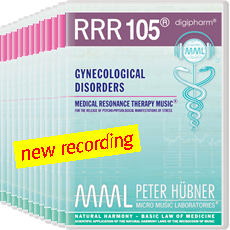| DEUTSCHE JUGEND UNIVERSITÄT |
| SCIENTIFICALLY INTRODUCING UNIVERSALITY TO THE UNIVERSITY |
|
| peter huebner • micro music laboratories |
| M E D I C A L R E S O N A N C E T H E R A P Y M U S I C® |
| R E D U C T I O N O F P S Y C H O – P H Y S I O L O G I C A L M A N I F E S T A T I O N S O F S T R E S S |
Scientific Studies and Clinical Observations
- Relief of pain during minor surgery – 57% of the women experienced the surgery as painless, as opposed to only 8% in the control group
- Prolongation of the effects of pain relieving pharmaceutical preparations following surgery
- Significant reduction in analgesics for female patients undergoing surgery
- Healing-inducing effects in blood formation following gynecological surgery: at the end of the treatment only 26% of the women displayed anemia, compared to 39% in the control group
- A 25% – 50% faster normalization of disfunctional juvenile uterine hemorrhaging
- Improvement in the individual profile of the functional asymmetry of the brain: significant reduction or complete disappearance of the coefficients of severe malfunctions
- Reduction of high blood pressure in women with hypertonia by 15-25 mm Hg
- Lowering of the stress hormone cortisol: prior to the operation, reduction of 39%, compared to 9.2% in the control group; after the operation a reduction of 60%, compared to 41% in the control group
- Improvement of the mental state of mentally overburdened women: in 22.2% a complete normalization and in 44.4% a significant improvement of the mental functions.
No complete normalization in the control group, 23% experienced a significant improvement
- Rapid normalization of the mental functions: complete normalization of 77.8% of the mental factors, significant improvement of 11.1% of the factors; in the control group, both these values stood at only 10%
- Complete dispersion of postoperative headaches in 62% of the female patients
- Normalization of sleep following an operation in 70% of the female patients, compared to 57% in the medication group
- Normalization of sleep in 61.5% of the female patients, compared to 33% in the control group
If you want to look at the studies in detail, please visit:
